- Home ·
- Publications ·
- Research Area F ·
- 2008 ·
Research Area F - Publications 2008
12-Dec-2008
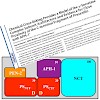
y-Secretase is an intramembrane cleaving aspartyl protease complex intimately implicated in Alzheimer disease pathogenesis. The protease is composed of the catalytic subunit presenilin (PS1 or PS2), the substrate receptor nicastrin (NCT), and two additional subunits, APH-1 (APH-1a, as long and short splice forms (APH-1aL, APH-1aS), or APH-1b) and PEN-2. Apart ...
20-Nov-2008
Christian Stigloher, Prisca Chapouton, Birgit Adolf, Laure Bally-Cuif
Brain Research Bulletin, 2008, 75, 266-273 published on 20.11.2008
Brain Research Bulletin, online article

The maintenance of progenitor cells is a crucial aspect of central nervous system development and maturation, and bHLH transcription factors of the E(Spl) subfamily are involved in this process in all vertebrates studied to date. In the zebrafish embryonic neural plate, a large number of E(Spl) genes (her genes) are at play.We review recent data on this point, ...
17-Nov-2008

We provide a protocol that describes an explant system that allows the dynamics of motor axons to be imaged. This method is based on nerve–muscle explants prepared from the triangularis sterni muscle of mice, a thin muscle that covers the inside of the thorax. These explants, which can be maintained alive for several hours, contain long stretches of peripheral ...
10-Nov-2008
Nature Neuroscience, online article
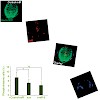
Serotonin is a major central nervous modulator of physiology and behavior and plays fundamental roles during development and plasticity of the vertebrate central nervous system (CNS). Understanding the developmental control and functions of serotonergic neurons is therefore an important task. In all vertebrates, prominent serotonergic neurons are found in the ...
10-Nov-2008
The Journal of Comparative Neurology, online article
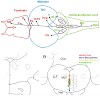
Serotonin is a major central nervous modulator of physiology and behavior and plays fundamental roles during development and plasticity of the vertebrate central nervous system (CNS). Understanding the developmental control and functions of serotonergic neurons is therefore an important task. In all vertebrates, prominent serotonergic neurons are found in the ...
28-Oct-2008

The metabotropic glutamate receptors type 1 (mGluR1s) are required for a normal function of the mammalian cerebellum. These G-protein-coupled receptors are abundantly expressed in the principle cerebellar cells, namely the Purkinje neurones. Under physiological conditions, mGluR1s are activated during repetitive activity of both afferent glutamatergic synaptic ...
06-Oct-2008
The Journal of Comparative Neurology, online article

In this study we analyze 5-hydroxytryptamine [5-HT]; serotonin) signaling in zebrafish, an increasingly popular vertebrate disease model. We compare and contrast expression of the 5-HT transporter genes slc6a4a and slc6a4b, which identify 5-HT-producing neurons and three novel 5-HT receptors, htr1aa, htr1ab, and htr1bd. slc6a4a and slc6a4b are expressed in the ...
01-Oct-2008
The Journal of Neuroscience, online article
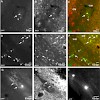
Despite their abundance, still little is known about the rather frequent, constantly proliferating progenitors spread throughout the adult mouse brain parenchyma. The majority of these progenitors express the basic-helix-loop-helix transcription factor Olig2, and their number further increases after injury. Here, we examine the progeny of this progenitor ...
19-Sep-2008
Marc Aurel Busche, Gerhard Eichhoff, Helmuth Adelsberger, Dorothee Abramowski, Karl-Heinz Wiederhold, Christian Haass, Matthias Staufenbiel, Arthur Konnerth, Olga Garaschuk
Science, 2008, 321, 1686-89 published on 19.09.2008
www.sciencemag.org, online article
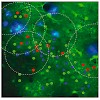
The neurodegeneration observed in Alzheimer’s disease has been associated with synaptic dismantling and progressive decrease in neuronal activity. We tested this hypothesis in vivo by using two-photon Ca2+ imaging in a mouse model of Alzheimer’s disease. Although a decrease in neuronal activity was seen in 29% of layer 2/3 cortical neurons, 21% of neurons ...
03-Sep-2008
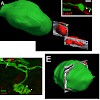
Clearance of cellular debris is a critical feature of the developing nervous system, as evidenced by the severe neurological consequences of lysosomal storage diseases in children. An important developmental process, which generates considerable cellular debris, is synapse elimination, in which many axonal branches are pruned. The fate of these pruned branches is ...
03-Sep-2008
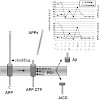
More than one hundred and fifty familial Alzheimer's Disease (FAD)-associated missense mutations in presenilins (PS1 and PS2), the catalytic subunit of the γ- secretase complex, cause aberrant Amyloid β-peptide (Aβ) production, by increasing the relative production of the highly amyloidogenic 42 amino acid variant. The molecular mechanism behind this pathological ...
25-Aug-2008
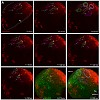
Neuronal production in the midbrain-hindbrain domain (MH) of the vertebrate embryonic neural tube depends on a progenitor pool called the ‘intervening zone’ (IZ), located at the midbrain-hindbrain boundary. The progressive recruitment of IZ progenitors along the mediolateral (future dorsoventral) axis prefigures the earlier maturation of the MH basal plate. It ...
14-Aug-2008
Jana Hartmann, Elena Dragicevic, Helmuth Adelsberger, Horst A. Henning, Martin Sumser, Joel Abramowitz, Robert Blum, Alexander Dietrich, Marc Freichel, Veit Flockerzi, Lutz Birnbaumer, Arthur Konnerth
Neuron, 2008, 59, 392-98 published on 14.08.2008
Neuron, online article
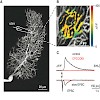
In the mammalian central nervous system, slow synaptic excitation involves the activation of metabotropic glutamate receptors (mGluRs). It has been proposed that C1-type transient receptor potential (TRPC1) channels underlie this synaptic excitation, but our analysis of TRPC1-deficient mice does not support this hypothesis. Here, we show unambiguously that it is ...
13-Aug-2008
Molecular and Cellular Neuroscience, online article
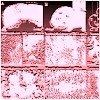
The orphan nuclear receptor NR4A2/Nurr1 is mandatory for the terminal differentiation of mesencephalic dopamine neurons in mammals, but a similar role has remained elusive in the homologous area of the fish brain, the posterior tuberculum. Using loss- and gain-of-function experiments in zebrafish, we show that NR4A2 is indeed responsible for the expression of ...
29-Jul-2008
The Journal of Comparative Neurology, online article

The zebrafish adult brain contains numerous neural progenitors and is a good model to approach the general mechanisms of adult neural stem cell maintenance and neurogenesis. Here we use this model to test for a correlation between Fgf signaling and cell proliferation in adult progenitor zones. We report expression of Fgf signals (fgf3,4,8a,8b,17b), receptors ...
23-Jul-2008
www.jbc.org, online article
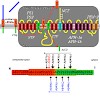
Gamma-Secretase mediates the final proteolytic cleavage, which liberates Amyloid beta -peptide, the major component of senile plaques in the brain of Alzheimer's disease patients. Therefore gamma -secretase is a prime target for Amyloid beta -peptide lowering therapeutic strategies. gamma -Secretase is a protein complex composed of four different subunits, ...
01-Jul-2008
Peter St George-Hyslop, Christian Haass
Nature, 2008, 14, 711-12 published on 01.07.2008
www.nature.com, online article
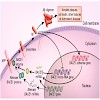
In the current issue of Nature Medicine, Faghihi et al. report that a noncoding antisense RNA against β-secretase, also known as BACE1 (β-site amyloid precursor protein (APP)-cleaving enzyme), may contribute to pathogenesis of Alzheimer's disease. BACE1 is a vertebrate-specific enzyme, which, together with presenilin-dependent γ-secretase, cleaves APP to generate ...
24-Apr-2008
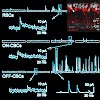
Synaptic integration is modulated by inhibition onto the dendrites of postsynaptic cells. However, presynaptic inhibition at axonal terminals also plays a critical role in the regulation of neurotransmission. In contrast to the development of inhibitory synapses onto dendrites, GABAergic/glycinergic synaptogenesis onto axon terminals has not been widely studied. ...
19-Mar-2008
www.jbc.org, online article
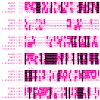
Ectodomain shedding of the amyloid precursor protein (APP) by the two proteases alpha- and ß-secretase is a key regulatory event in the generation of the Alzheimer’s disease amyloid ß peptide (Aß). ß-secretase catalyzes the first step in Aß-generation, whereas a-secretase cleaves within the Aß domain, prevents Aß generation and generates a secreted form of APP ...
01-Mar-2008

The etiologies of neurodegenerative diseases may be diverse; however, a common pathological denominator is the formation of aberrant protein conformers and the occurrence of pathognomonic proteinaceous deposits. Different approaches coming from neuropathology, genetics, animal modeling and biophysics have established a crucial role of protein misfolding in the ...
01-Feb-2008
Molecular and Cellular Neuroscience, online article

Since the discovery of radial glia as the source of neurons, their heterogeneity in regard to neurogenesis has been described by clonal and time-lapse analysis in vitro. However, the molecular determinants specifying neurogenic radial glia differently from radial glia that mostly self-renew remain ill-defined. Here, we isolated two radial glial subsets that ...
23-Jan-2008
The Journal of Neuroscience, online article
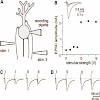
During the developmental formation of neuronal circuits, redundant synapses are eliminated and persisting synapses strengthened. In the immature cerebellum, climbing fiber–Purkinje cell synapses undergo a pronounced synaptic rewiring, from a multiple innervation around birth to a mono-innervation in adults. An early stage of this process consists in the ...
09-Jan-2008

In the mammalian brain, neurogenesis continues only in few regions of the forebrain. The molecular signals governing neurogenesis in these unique neurogenic niches, however, are still ill defined. Here, we show that bone morphogenic protein (BMP)-mediated signaling is active in adult neural stem cells and is crucial to initiate the neurogenic lineage in the adult ...










